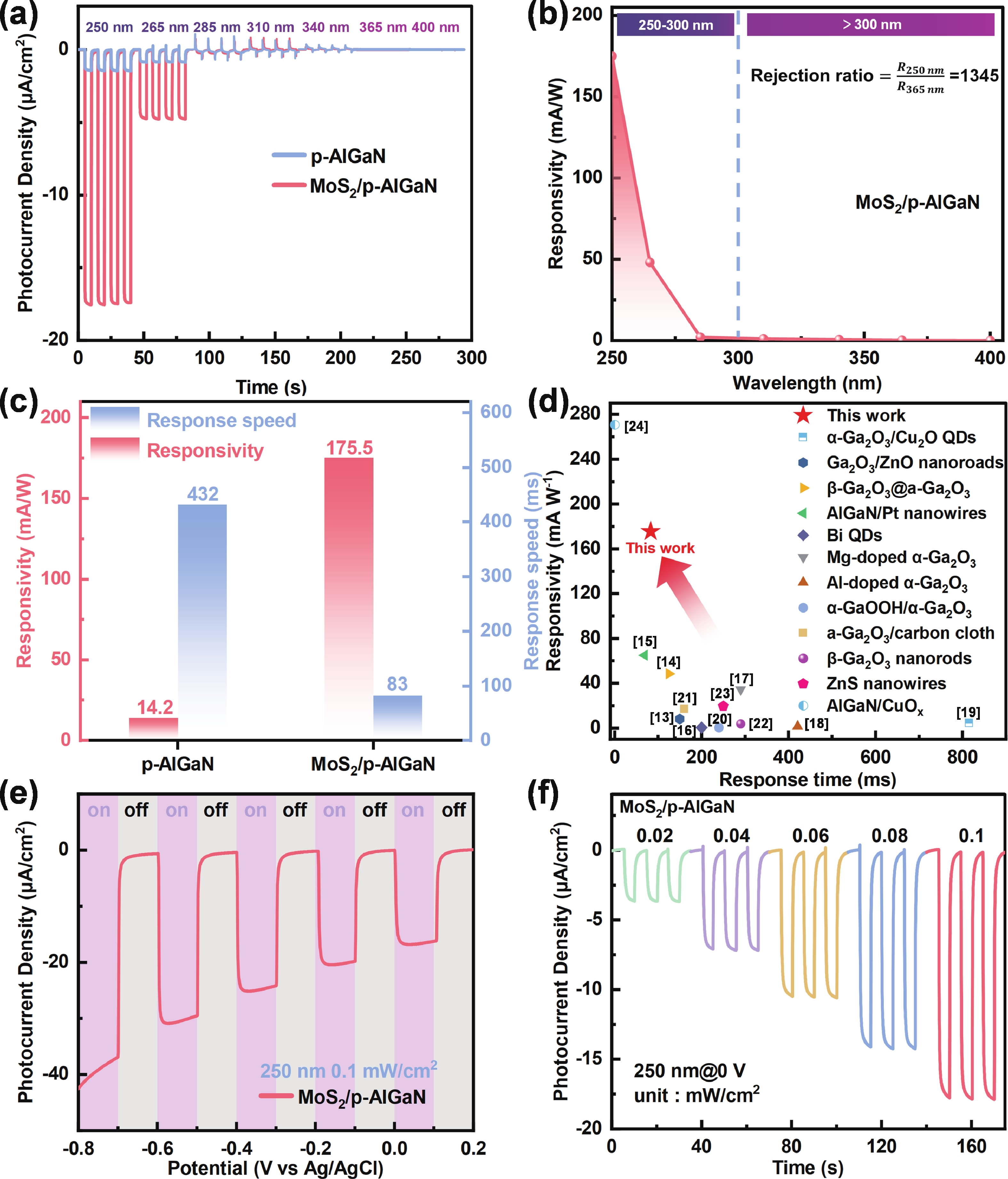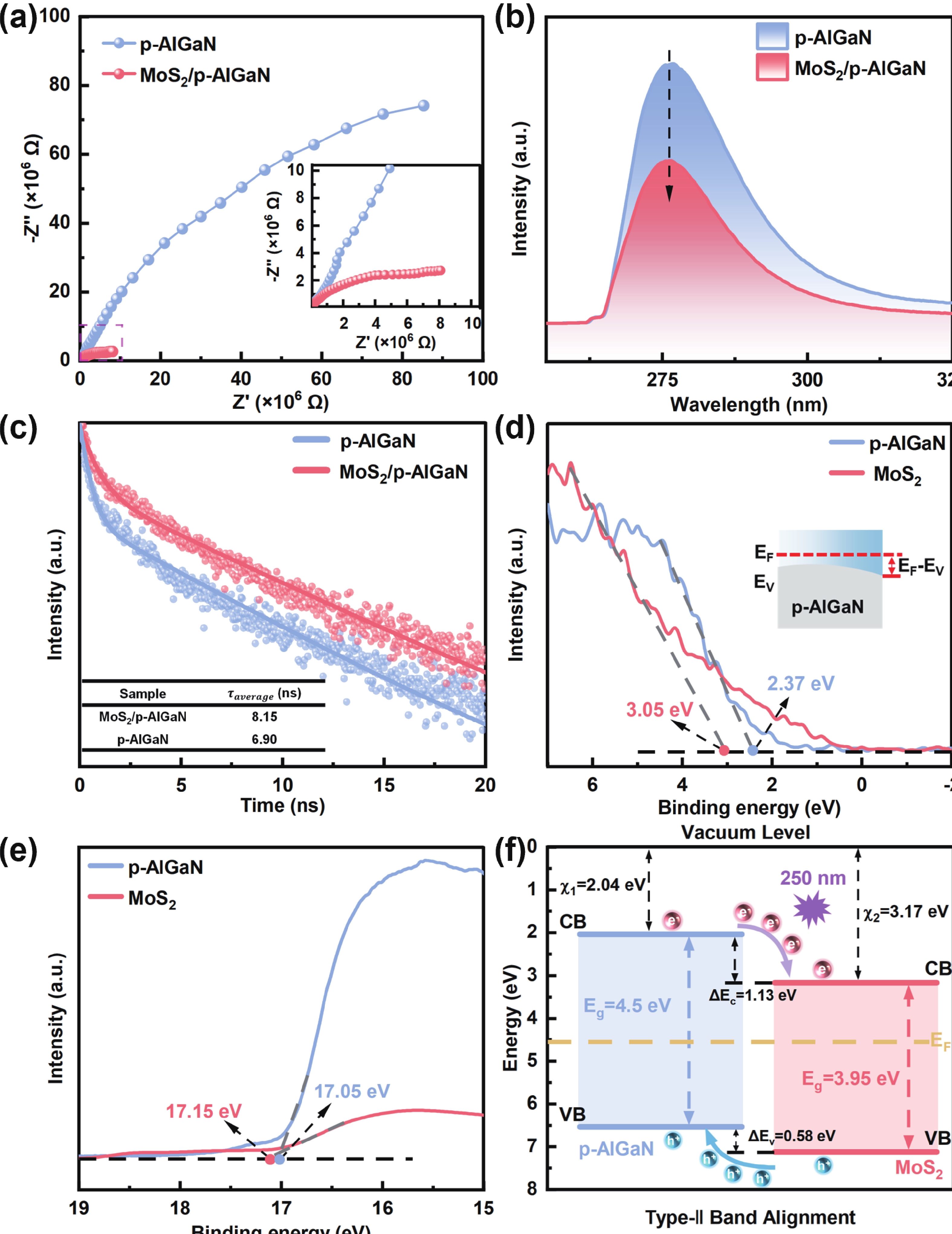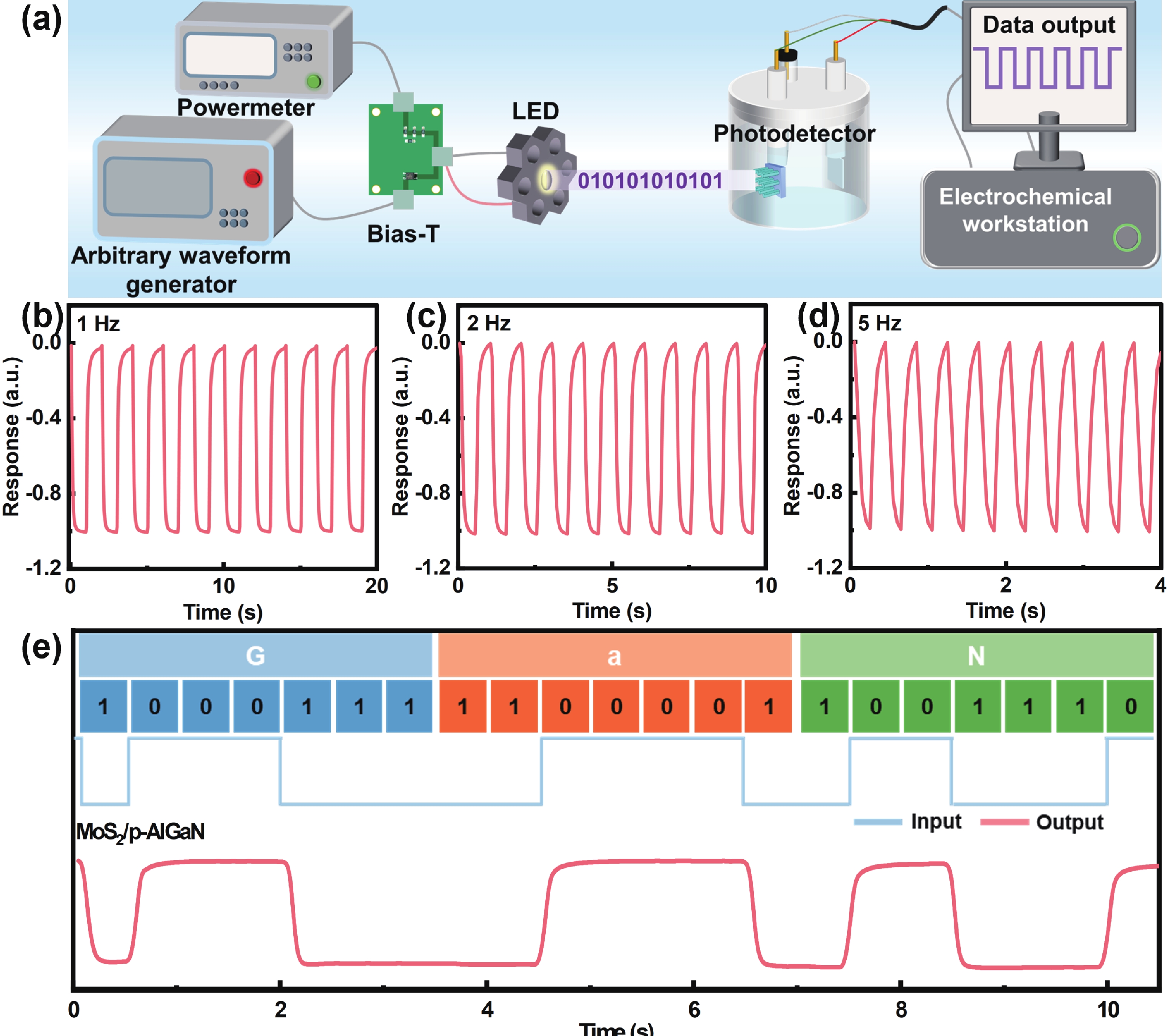| Citation: |
Menglong Wang, Wei Chen, Xin Liu, Wengang Gu, Yang Li, Xudong Yang, Haiding Sun. MoS2 quantum dots/AlGaN nanowire heterostructure-based photodetectors for solar-blind photodetection and optical communication[J]. Journal of Semiconductors, 2026, In Press. doi: 10.1088/1674-4926/25090026
****
M L Wang, W Chen, X Liu, W G Gu, Y Li, X D Yang, and H D Sun, MoS2 quantum dots/AlGaN nanowire heterostructure-based photodetectors for solar-blind photodetection and optical communication[J]. J. Semicond., 2026, 47(3), 032501 doi: 10.1088/1674-4926/25090026
|
MoS2 quantum dots/AlGaN nanowire heterostructure-based photodetectors for solar-blind photodetection and optical communication
DOI: 10.1088/1674-4926/25090026
CSTR: 10.1088/1674-4926/25090026
More Information-
Abstract
Solar-blind ultraviolet photodetectors (UV PDs), capable of detecting UV radiation without interference from sunlight, have attracted significant interest. Herein, we propose a 0D/1D heterostructure for UV PDs, which was fabricated by spin-coating MoS2 quantum dots onto p-AlGaN nanowires. The device achieves a high responsivity of 175.5 mA/W and a fast response speed of 83 ms at 250 nm illumination under self-powered mode, which improved nearly 1235% and 521% after MoS2 decoration, respectively. These improvements can be attributed to the type-Ⅱ heterostructure formed between p-AlGaN and MoS2, which facilitates enhanced charge separation and carrier transport. Later, we demonstrate the implementation of this device in optical communication, achieving high-accuracy transmission of "GaN" ASCII code signals. Such a 0D/1D heterostructure provides an effective strategy for high-performance solar-blind UV PD. -
References
[1] Han Y R, Wang Y F, Fu S H, et al. Bias-tuned selective spectral response high-performance Ga2O3/GaN heterojunction ultraviolet photodetector. IEEE Electron Device Lett, 2025, 46(7), 1083 doi: 10.1109/LED.2025.3562580[2] Wang D H, Liu X, Fang S, et al. Pt/AlGaN nanoarchitecture: Toward high responsivity, self-powered ultraviolet-sensitive photodetection. Nano Lett, 2021, 21(1), 120 doi: 10.1021/acs.nanolett.0c03357[3] Cai Q, Wang S S, Zhao H Q, et al. Design of band-engineered bidirectional avalanche photodetector enabling switchable dual-band ultraviolet detection. IEEE Electron Device Lett, 2025, 46(8), 1285 doi: 10.1109/LED.2025.3578039[4] Chen H F, Zhang Y D, Sun X X, et al. Solar-blind UV light-modulated β-Ga2O3 full-wave bridge rectifier. J Semicond, 2026, 47(1), 012301 doi: 10.1088/1674-4926/25040027[5] Chen H F, Liu Z H, Zhang Y X, et al. 10×10 Ga2O3-based solar-blind UV detector array and imaging characteristic. J Semicond, 2024, 45(9), 092502 doi: 10.1088/1674-4926/24030005[6] Xue J J, Huang J Y, Li K H, et al. Boosting photoelectrochemical performance on α-Ga2O3 nanowire arrays by indium cation doping for self-powered ultraviolet detection. J Semicond, 2025, 46(10), 102501 doi: 10.1088/1674-4926/25020024[7] Jiang M, Zhao Y K, Liu T, et al. A dual-mode transparent device for 360° quasi-omnidirectional self-driven photodetection and efficient ultralow-power neuromorphic computing. Light Sci Appl, 2025, 14(1), 273 doi: 10.1038/s41377-025-01991-y[8] Li Y N, Zheng H Y, Li J H, et al. Ultrafast 0D/1D ZnO/CuO photodetector in nanosecond scale by engineering the type-II heterostructure. Appl Phys Lett, 2025, 126(8), 083503 doi: 10.1063/5.0253662[9] Zhang T, Cai S Y, Liang N N, et al. High performance metal-semiconductor-metal ultraviolet photodetector based on mixed-dimensional TiO2/CsPbBr3 heterostructures. Phys Scr, 2024, 99(1), 015526 doi: 10.1088/1402-4896/ad166a[10] Huang H, Du C C, Shi H Y, et al. Water-soluble monolayer molybdenum disulfide quantum dots with upconversion fluorescence. Part & Part Syst Charact, 2015, 32(1), 72[11] Qian Z H, Yang M H, Lin S S. Liquid water molecular connected quantum dots for self-driven photodetector. Adv Funct Materials, 2025, 35(24), 2420182 doi: 10.1002/adfm.202420182[12] Wang D H, Wu W T, Fang S, et al. Observation of polarity-switchable photoconductivity in III-nitride/MoSx core-shell nanowires. Light Sci Appl, 2022, 11(1), 227 doi: 10.1038/s41377-022-00912-7[13] Ni D W, Wang Y J, Li A S, et al. ALD oxygen vacancy-rich amorphous Ga2O3 on three-dimensional urchin-like ZnO arrays for high-performance self-powered solar-blind photodetectors. Nanoscale, 2022, 14(8), 3159 doi: 10.1039/D1NR08262K[14] Feng Y, Lv L F, Zhang H, et al. Catalyst-Free β-Ga2O3@a-Ga2O3 core−shell nanorod arrays grown on Si substrate for high-performance self-powered solar-blind photoelectrochemical photodetection. Appl Surf Sci, 2023, 624, 157149 doi: 10.1016/j.apsusc.2023.157149[15] Kang Y, Wang D H, Fang S, et al. Coupling plasmonic Pt nanoparticles with AlGaN nanostructures for enhanced broadband photoelectrochemical-detection applications. ACS Appl Nano Mater, 2021, 4(12), 13938 doi: 10.1021/acsanm.1c03239[16] Xing C Y, Huang W C, Xie Z J, et al. Ultrasmall bismuth quantum dots: Facile liquid-phase exfoliation, characterization, and application in high-performance UV–vis photodetector. ACS Photonics, 2018, 5(2), 621 doi: 10.1021/acsphotonics.7b01211[17] Zhou X, Ye L J, Yuan L, et al. Mg-doped α-Ga2O3 nanorods for the construction of photoelectrochemical-type self-powered solar blind UV photodetectors and underwater imaging application. Adv Sci, 2025, 12(16), 2413074 doi: 10.1002/advs.202413074[18] Guo J C, Sun G W, Fan M M, et al. Hydrothermal growth of an Al-doped α-Ga2O3 nanorod array and its application in self-powered solar-blind UV photodetection based on a photoelectrochemical cell. Micromachines, 2023, 14(7), 1336 doi: 10.3390/mi14071336[19] Han P P, Kang T X, Chen W H, et al. Cu2O quantum dots modified α-Ga2O3 nanorod arrays as a heterojunction for improved sensitivity of self-powered photoelectrochemical detectors. J Alloys Compd, 2023, 952, 170063 doi: 10.1016/j.jallcom.2023.170063[20] Zhang Y N, Jiao S J, Zhang J H, et al. Study on the evolution from α-GaOOH to α-Ga2O3 and solar-blind detection behavior of an α-GaOOH/α-Ga2O3 heterojunction. CrystEngComm, 2022, 24(9), 1789 doi: 10.1039/D1CE01559A[21] Zhang D, Zhou X, Xiong Y Q, et al. Flexible self-powered solar-blind UV photodetectors based on amorphous Ga2O3 modified carbon fiber cloth. J Alloys Compd, 2023, 969, 172483 doi: 10.1016/j.jallcom.2023.172483[22] Chen K, Wang S L, He C R, et al. Photoelectrochemical self-powered solar-blind photodetectors based on Ga2O3 nanorod array/electrolyte solid/liquid heterojunctions with a large separation interface of photogenerated carriers. ACS Appl Nano Mater, 2019, 2(10), 6169 doi: 10.1021/acsanm.9b00992[23] Li D, Hao S M, Xing G J, et al. Solution grown single-unit-cell quantum wires affording self-powered solar-blind UV photodetectors with ultrahigh selectivity and sensitivity. J Am Chem Soc, 2019, 141(8), 3480 doi: 10.1021/jacs.8b10791[24] Xue J J, Wang X, Xu G Y, et al. Multiple exciton generation boosting over 100% quantum efficiency photoelectrochemical photodetection. Nat Commun, 2025, 16(1), 5275 doi: 10.1038/s41467-025-60420-1 -
Proportional views





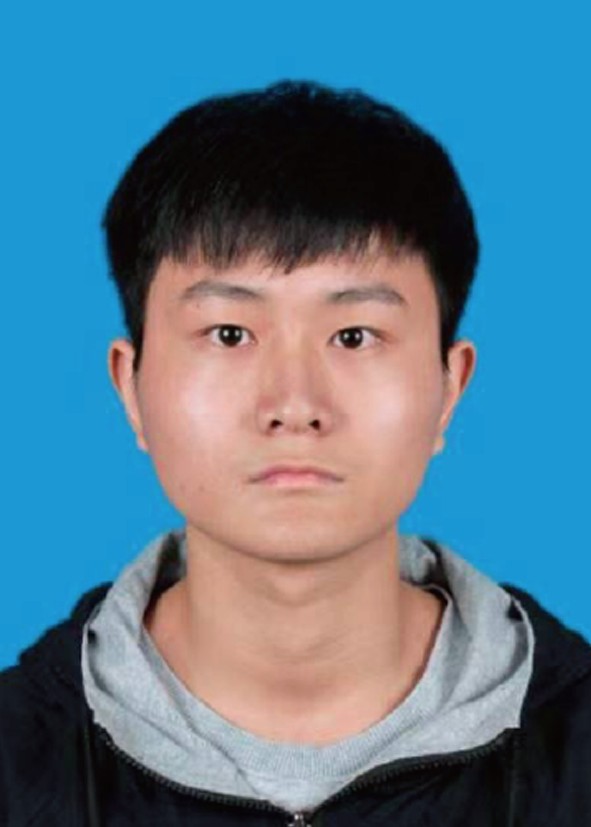 Menglong Wang received the BEng degree from Henan Polytechnic University, Jiaozuo, China, in 2022. He is pursuing the PhD degree with the School of Microelectronics, University of Science and Technology of China, Hefei, China.
Menglong Wang received the BEng degree from Henan Polytechnic University, Jiaozuo, China, in 2022. He is pursuing the PhD degree with the School of Microelectronics, University of Science and Technology of China, Hefei, China.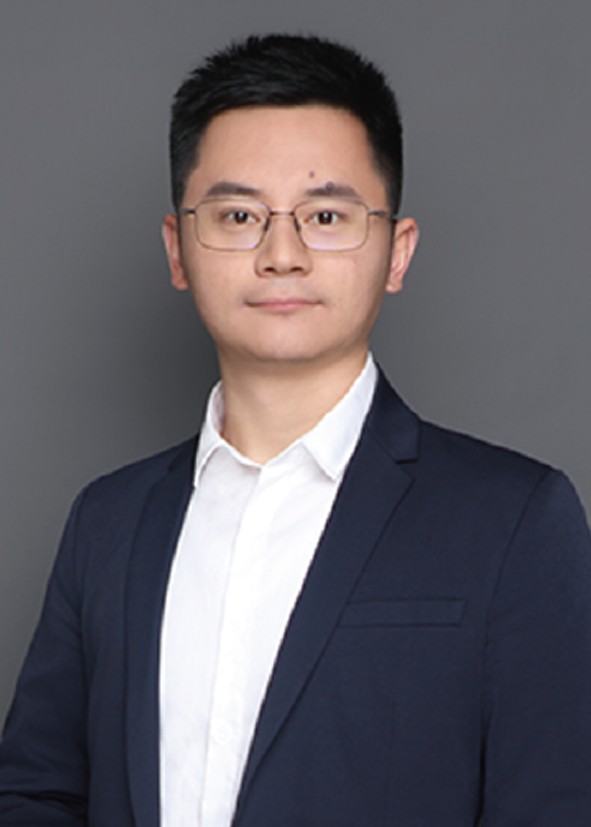 Haiding Sun received the BS degree from Huazhong University of Science and Technology, Wuhan, China, in 2008, and the PhD degree in electrical engineering from Boston University, Boston, MA, United States, in 2015. He is currently a professor with the School of Microelectronics, University of Science and Technology of China, Hefei, China. His research interests include the investigation of the physics, MBE and MOCVD epitaxy, fabrication, and characterization of semiconductor materials and devices.
Haiding Sun received the BS degree from Huazhong University of Science and Technology, Wuhan, China, in 2008, and the PhD degree in electrical engineering from Boston University, Boston, MA, United States, in 2015. He is currently a professor with the School of Microelectronics, University of Science and Technology of China, Hefei, China. His research interests include the investigation of the physics, MBE and MOCVD epitaxy, fabrication, and characterization of semiconductor materials and devices.
 DownLoad:
DownLoad:
